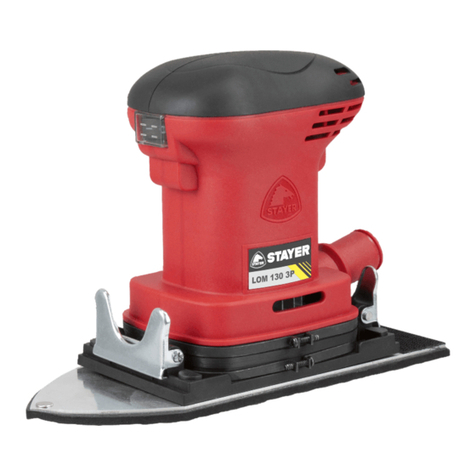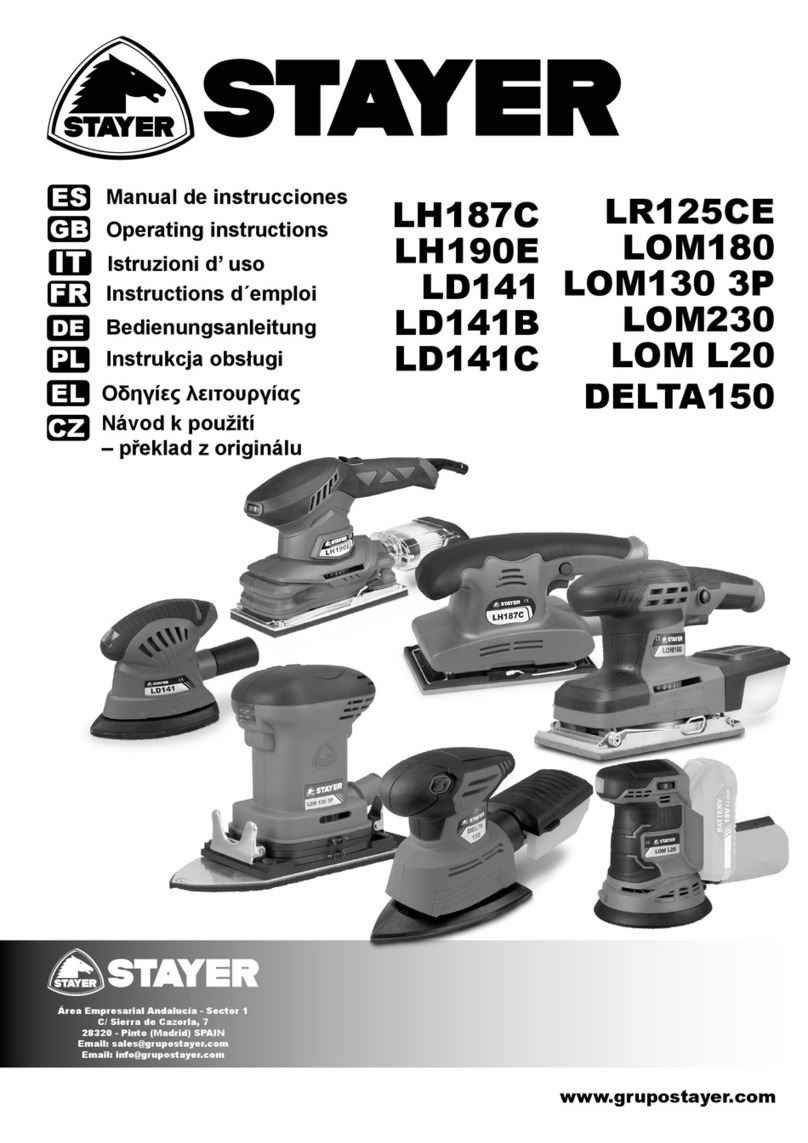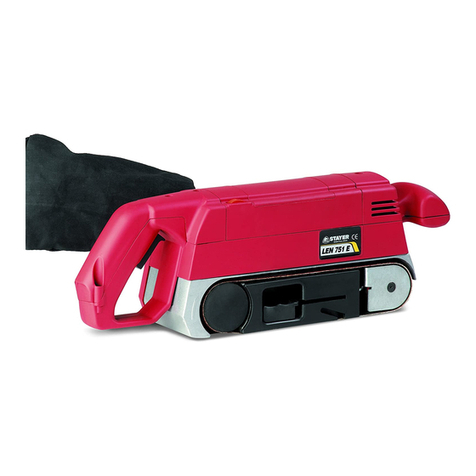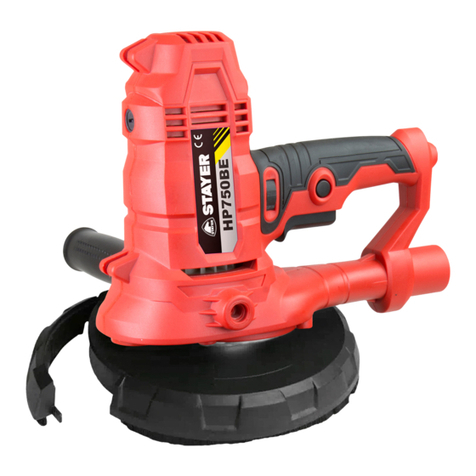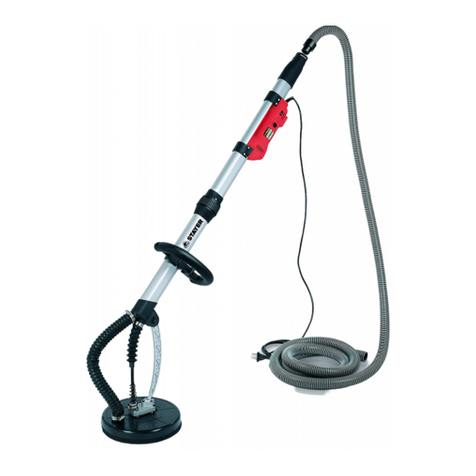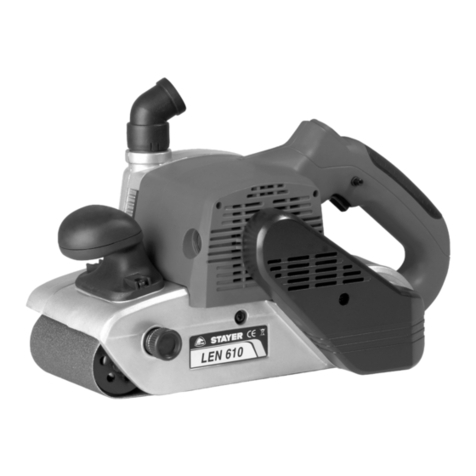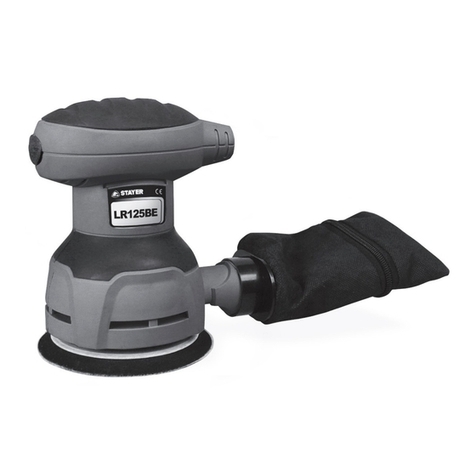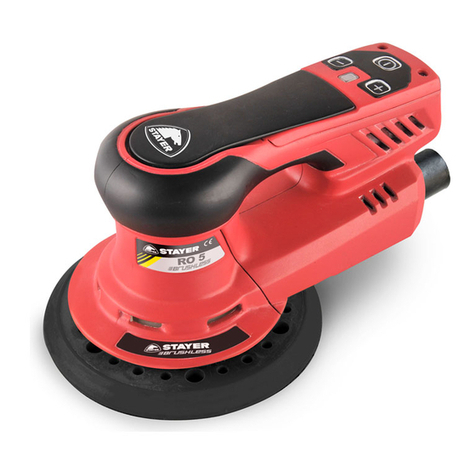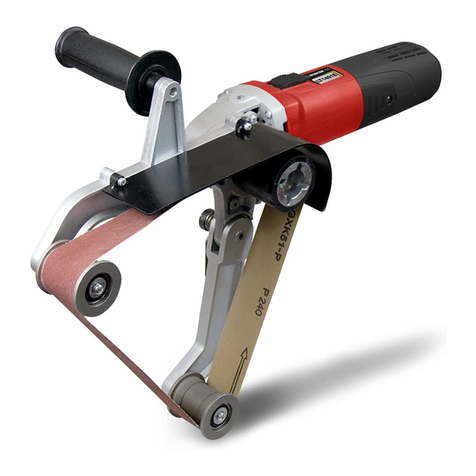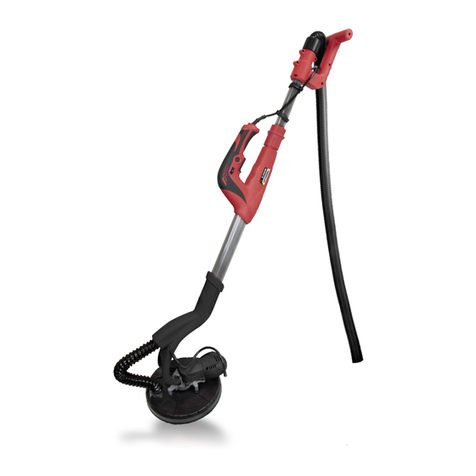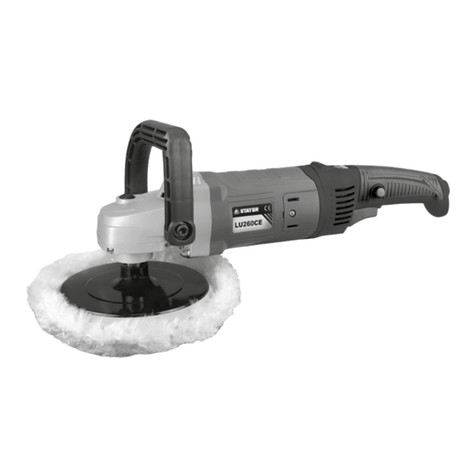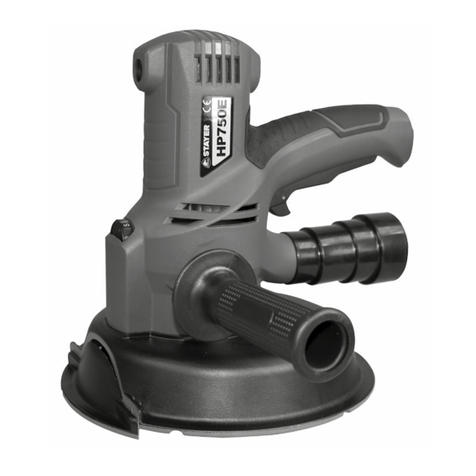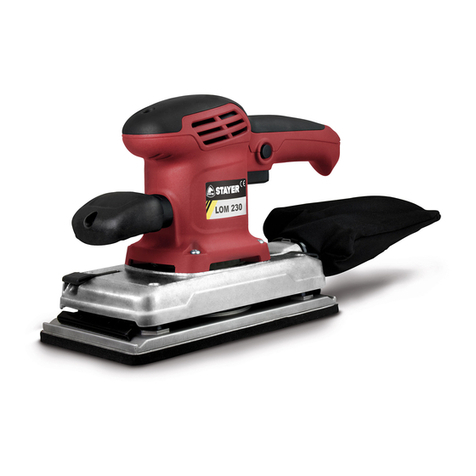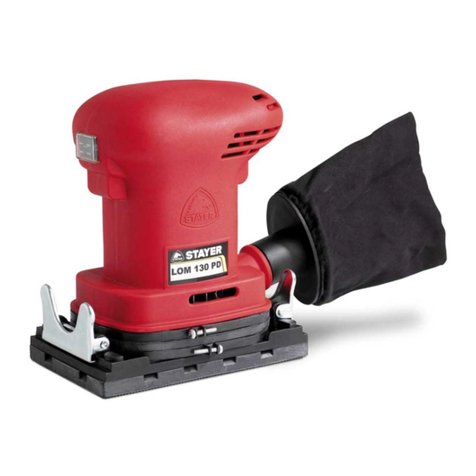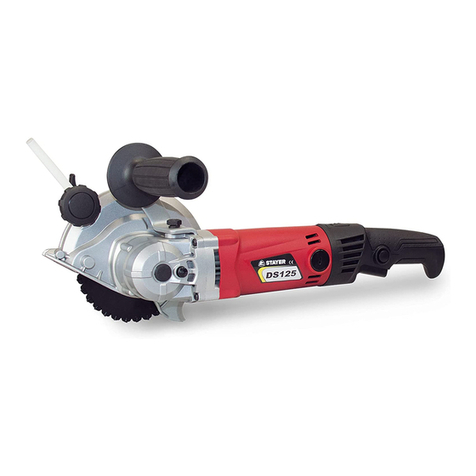
ESPAÑOL
5
5
Este manual es acorde con la fecha de fabricación de su
máquina, información que encontrará en la tabla de datos
técnicos de la maquina adquirida, buscar actualizaciones
de manuales de nuestras maquinas en la pagina web:
www.grupostayer.com
La herramienta eléctrica ha sido diseñada para lijar y
pulir en seco madera, plástico, metal y superficies
emplastecidas o pintadas. Es especialmente apropiada
para trabajar perles, esquinas o puntos difícilmente
accesibles.
Instrucciones de seguridad especícas
Solamente emplee la herramienta eléctrica para lijar
en seco. La penetración de agua en el aparato eléctrico
comporta un mayor riesgo de electrocución.
¡Atención! Peligro de incendio. Evite el
sobrecalentamiento de la pieza y de la propia
lijadora. Vacíe siempre el depósito de polvo.
El material en polvo acumulado en el saco colector de
polvo, microltro, bolsa de papel (o la bolsa ltrante o ltro
del aspirador) puede llegar a autoincendiarse bajo unas
condiciones desfavorables, como, p. ej., al proyectarse
chispas al lijar metal. La probabilidad de que esto ocurra es
mayor si el material va mezclado con partículas de pintura,
poliuretano u otras sustancias químicas y si éste se
hubiese calentando tras un uso intenso de la herramienta.
• Asegure la pieza de trabajo. Una pieza de trabajo
jada con unos dispositivos de sujeción, o en un
tornillo de banco, se mantiene sujeta de forma mucho
más segura que con la mano.
• Mantenga limpio su puesto de trabajo. La mezcla de
diversos materiales es especialmente peligrosa. Las
aleaciones ligeras en polvo pueden arder o explotar.
• No utilice la herramienta eléctrica si el cable está
dañado. No toque un cable dañado, y desconecte
el enchufe de la red, si el cable se daña durante el
trabajo. Un cable dañado comporta un mayor riesgo
de electrocución.
Descripción del funcionamiento
Lea íntegramente estas advertencias de peligro
e instrucciones. En caso de no atenerse a las
advertencias de peligro e instrucciones siguientes,
ello puede ocasionar una descarga eléctrica, un
incendio y/o lesión grave.
Por favor reérase al manual adjunto para las instrucciones
de seguridad generales.
Por favor lea y comprenda completamente las
instrucciones antes de ensamblar y utilizar este equipo.
Montaje
Instalación de la bolsa de polvo (Fig. 2)
Instale la bolsa de polvo 6, en la toma de aspiración 9.
¡Aviso! Por razones de salud es estrictamente obligatorio
el uso de la bolsa recolectora de polvo.
Montaje de la caja colectora de polvo (LH190E g.5)
Coloque la caja colectora de polvo 6 en la toma de aspiración
9.
- Haciendo que las muescas encajen en la caja colectora 6.
- Proceda a girar en sentido de las agujas del reloj, hasta
enclavar.
- Para retirar la caja colectora 6, gire en sentido contrario a
las agujas del reloj y tire hacia afuera .
Instalación del papel de lijado / desbastado
(Fig. 4-6-7-8).
Desconecte primero el enchufe de alimentación.
- Suelte los retenes 8 de ambos lados.
- Coloque la parte abrasiva de la hoja de lijado/ desbaste
orientada al exterior del plato de lijado 7.
- El borde de la hoja de lijado/ desbaste, debe colocarlo
en la parte superior del plato de lijado 7 y asegure
con el retén delantero 8 (LH190E).
- Adhiera la hoja de lijado/ desbaste al plato de lijado
7. Asegurándose de que está bien tenso.
- Acabe de jar la hoja de lijado/ desbaste con el retén
posterior 8. (Fig.4-7-8).
- Asegúrese de que los agujeros de la hoja de lijado/
desbaste coinciden con las del plato de lijado 7, para
una perfecta aspiración.
Plato perforador (LH190E, Fig. 9)
Se ha suministrado un plato perforador 10, para hacer
agujeros en el papel lija.
- Los agujeros deben alinearse con los oricios de la
base lijadora 7.
- Debe colocar, como se indica antes, la hoja de lijar/
- desbastar.
- Luego ponga el plato perforador 10 en un lugar estable
y nivelado, y proceda a colocar el plato de lijado 7, con
la hoja de lija ya colocada, dentro del plato perforador,
haciendo un poco de presión hacia abajo, para que
perfore correctamente.
Descripción de funciones (Fig. 1)
1. Empuñadura frontal
2. Interruptor ON / OFF
3. Control de velocidad*
4. Botón de enclavamiento
5. Empuñadura principal
6. Bolsa de polvo / Caja colectora de polvo (LH190E)
7. Plato de lijado
8. Retén de sujeción de la lija
9. Toma de Aspiración
10. Plato perforador papel lija. (LH190E)
11. Tapa caja colectora de polvo.
12. Filtro de polvo Hepa.
*Los accesorios descritos son opcionales y no corresponden
al material que se adjunta de serie.
